Table of Contents
- From Beans to Brilliance: Your Home Barista Journey
- Why Coffee Makers are All the Rage
- Manual vs. Automatic Coffee Makers: Navigating the Brew Battle
- The Art of Choosing the Right Coffee Beans: A Dive into Philippine Varieties
- The Perfect Grind: Unlocking the Secrets of Flavor through Granularity
- Water Matters: Delving into the Essence of Coffee Brewing
- Maintenance and Care: Maximizing Your Coffee Maker’s Lifespan and Flavor Potential
- Comparative Reviews: A Deep Dive into the Leading Coffee Maker Brands and Models in the Philippine Market
- Coffee Makers: More Than Just Appliances
- A Toast to Modern Coffee Culture
From Beans to Brilliance: Your Home Barista Journey

Coffee: it’s more than just a beverage—it’s a culture, an art, and for many, a daily ritual.
While the charm of the local coffee shop is undeniable, there’s a rising trend among aficionados and casual drinkers alike: crafting the perfect cup in the comforts of their own homes.
At the heart of this trend is the coffee maker. Today, let’s delve into the world of these brewers, explore the best types, and discover what makes them so incredibly hip.
Why Coffee Makers are All the Rage
Personalization: One of the driving factors behind the popularity of home coffee makers is the ability to tailor each cup to personal preferences. Whether it’s adjusting the brew strength, grind size, or milk froth, having a coffee maker means you’re in control.
Economical: While the initial investment in a coffee maker can be significant, especially for high-end models, it often pays off in the long run. Think about the cumulative cost of daily visits to a coffee shop versus brewing at home.
Sustainability: With concerns about the environment at an all-time high, many people are looking for ways to reduce waste. By brewing at home, you can opt for reusable filters, avoid single-use cups, and reduce the carbon footprint associated with daily coffee shop runs.
Exploration: The world of coffee beans is vast. Owning a coffee maker allows you to experiment with different beans, roasts, and brewing methods. It’s a delightful journey of discovery, with each cup offering a new experience.
The Cool Factor: Let’s face it—there’s something undeniably hip about brewing your own coffee. Whether it’s the mesmerizing process of watching coffee drip or the satisfaction of mastering latte art, it’s a blend of science and art that captivates many.
In the diverse universe of coffee brewing, two categories stand prominent: manual and automatic coffee makers. Both hold their allure and serve coffee enthusiasts in distinct ways.
Delve deeper into the world of these brew methods and their signature machines to determine which suits your caffeine cravings best.
Manual Coffee Makers
French Press
Originating from France, this method has garnered worldwide popularity for its straightforward brewing. By steeping coffee grounds in hot water and then separating them with a mesh plunger, the French Press delivers a full-bodied brew, rich in oils and flavor.
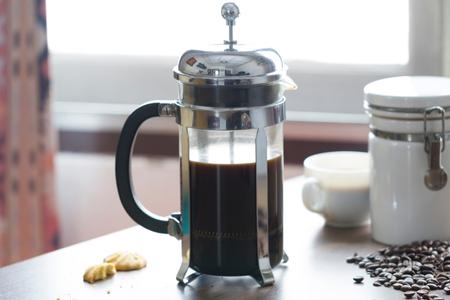
AeroPress
This contemporary invention has become a favorite among travelers and aficionados alike. The AeroPress uses air pressure to swiftly extract a smooth and vibrant coffee, resulting in a less acidic cup than some other methods.
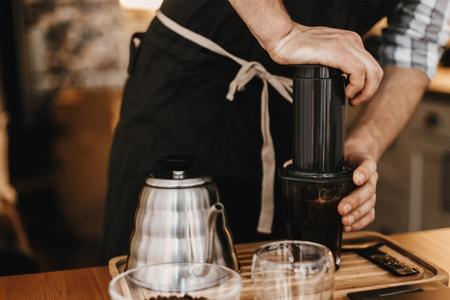
Pour-Over
Rooted in precision, this method accentuates the intricate flavors of coffee beans. By gradually pouring hot water over coffee grounds, one can control the brew’s pace and temperature, resulting in a clean cup with refined flavors.
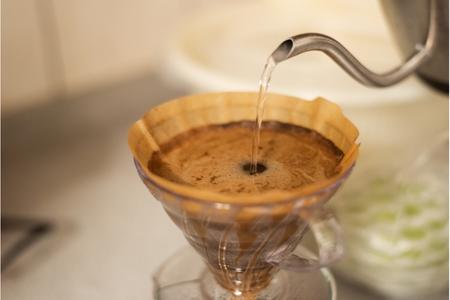
Siphon or Vacuum Pot
This visually captivating method merges science with art. With its two-chamber system, it brews coffee by creating a dance of vapor pressure and vacuum, yielding a coffee that’s both aromatic and theatrical in its preparation.
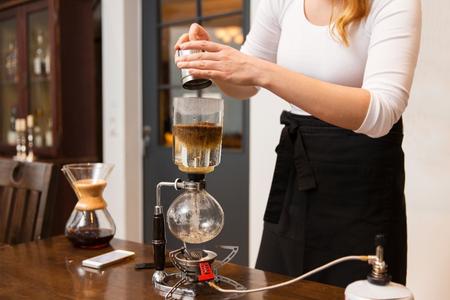
Moka Pot (Italian Coffee Maker)
An Italian classic, the Moka Pot brews coffee by employing water vapor pressure. As water in the lower chamber heats, it surges through the coffee grounds, producing a brew that’s robust and sits between drip coffee and espresso in terms of strength.
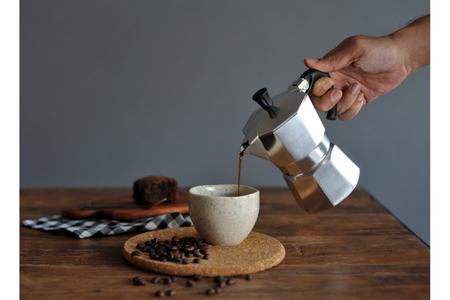
Turkish Coffee Maker
Rich in history and flavor, Turkish coffee is a concoction of finely powdered beans, water, and often sugar. Prepared in a ‘cezve’ or ‘ibrik’, the brew is heated slowly. The treasured foam on top and the thick grounds at the bottom are defining traits of this ancient brew.
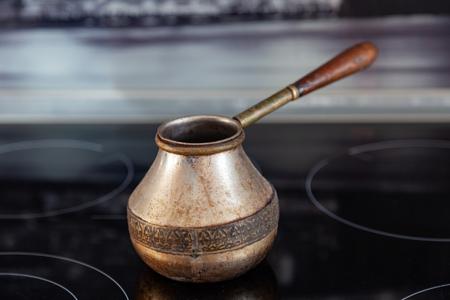
Automatic Coffee Makers
Drip Coffee Makers
These familiar household machines operate by allowing hot water to flow through coffee grounds, extracting flavor as it passes and then collecting in a carafe. They are beloved for their convenience and consistency.
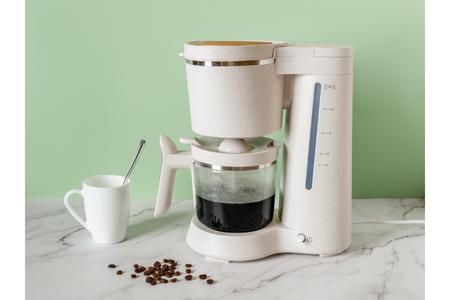
Pod Systems (e.g., Keurig, Nespresso)
Simplifying the brewing process, these machines utilize pre-packaged pods or capsules to produce single servings rapidly. They offer a wide variety of flavors and brew types at the touch of a button.
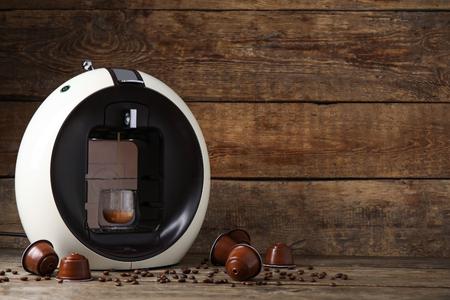
Automatic Espresso Machines
Perfect for those who crave the intensity of an espresso without the hands-on approach. These machines manage everything from grinding to tamping and pressure application, delivering a consistent shot every time.
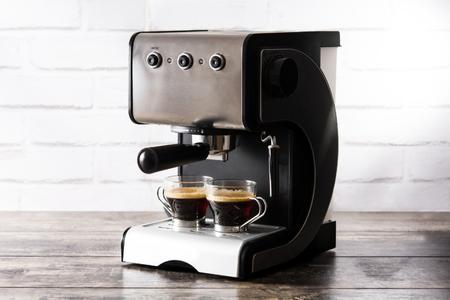
Bean-to-Cup Machines
The pinnacle of convenience for coffee purists, these machines freshly grind beans for every brew. With an array of programmable settings, they cater to varied taste preferences, ensuring a fresh cup tailored to one’s liking.
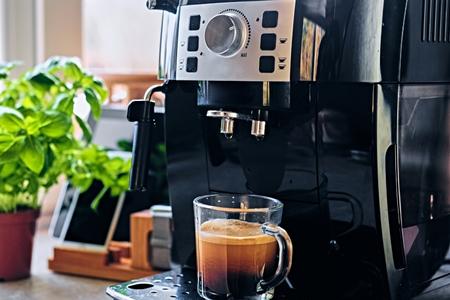
Percolators
A nostalgic nod to the past, percolators were once a household staple. They brew by continuously cycling hot water through the coffee grounds, creating a strong and hearty coffee. While their popularity has waned with the advent of modern machines, they still hold a cherished place in many kitchens.
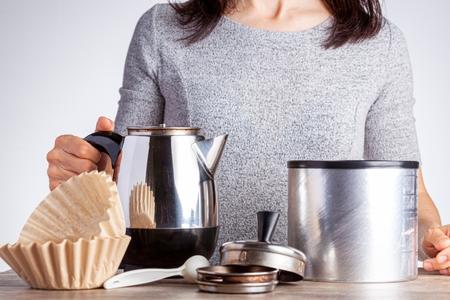
The Art of Choosing the Right Coffee Beans: A Dive into Philippine Varieties
Roast Levels
Light Roasts: Displaying a soft light brown hue, these beans capture the essence of their origins. With a pronounced acidity and brightness, you can often discern floral and citrus undertones, echoing the diverse ecosystems of the Philippines.
Medium Roasts: Sporting a medium brown shade, these beans strike a balance in flavor. They retain a touch of their inherent characteristics while introducing a rounder body, hinting at flavors like tropical fruits and cacao.
Dark Roasts: Dark, almost ebony in color, these beans reflect a deep roasting process. The result is a robust coffee with notes leaning towards roasted cocoa, molasses, or even toasted coconut.
Coffee Origins in the Philippines
Benguet: Found in the mountainous Cordillera region, Benguet coffee is often likened to Arabica beans. With its smooth taste, it often carries notes of caramel and a slight citrus undertone.
Barako (Liberica): Native to the Batangas region, Barako is bold and unique, with a strong taste and anise-like aroma, making it distinct from most coffee varieties.
Robusta from Mindanao: Grown primarily in regions like Bukidnon and Sultan Kudarat, these beans are earthy, with a full body and hints of cacao, perfect for those who prefer a stronger cup.
Sulu Arabica: A rare gem, this bean from the Sulu Archipelago offers a medium-bodied coffee with hints of chocolate and fruit, making it a sought-after variety among connoisseurs.
Flavors in Philippine Coffee
Citrusy: Evoking the flavors of calamansi or pomelo, this note is often associated with higher elevation beans, like those from Benguet.
Cacao: A nod to the rich chocolate tradition of the Philippines, this flavor is dominant in Robusta beans from Mindanao.
Anise: The signature note of the Barako bean, this licorice-like flavor sets it apart from other varieties.
Tropical Fruits: With the country’s abundance of tropical produce, it’s no surprise that hints of mango, banana, or even coconut can sometimes be detected in the coffee.
Understanding the tapestry of flavors, roasts, and origins unique to Philippine coffee beans elevates your home brewing journey.
These beans, influenced by the country’s rich soils and diverse climates, offer a captivating palette for coffee enthusiasts to explore.
With every sip, one tastes the archipelago’s history, culture, and passion for coffee.
The Perfect Grind: Unlocking the Secrets of Flavor through Granularity
Understanding the Relationship Between Grind Size and Flavor
The journey to a delightful cup of coffee starts long before the water meets the beans—it begins with the grind.
Grind size, often overlooked, plays a pivotal role in determining the flavor profile of your brew. It’s the dance between surface area and water that dictates the extraction process.
A finer grind exposes more surface area to water, accelerating extraction, while a coarser grind slows the process down.
However, it’s not just about speed. The extraction rate can significantly influence the flavors brought to the fore. Over-extraction, usually resulting from too fine a grind, can make your coffee taste bitter, robbing it of its nuanced flavors.
Conversely, under-extraction, typically due to too coarse a grind, leaves you with a sour taste, as the delightful acids in the coffee are released before the balancing sweet flavors.
Matching Grind Size to Your Brewing Method
Every coffee-making method has its preferred grind size, which complements its brewing time and mechanism:
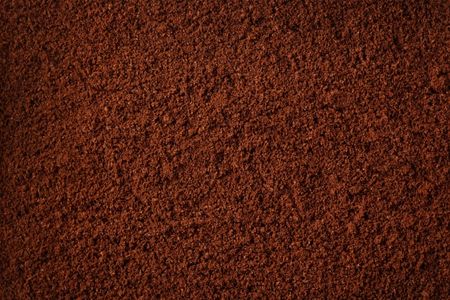
Espresso Machines require a fine grind, almost powdery, to achieve the strong, concentrated shot in a matter of seconds. The pressurized water needs to extract flavors rapidly, and the fine particles aid this process.
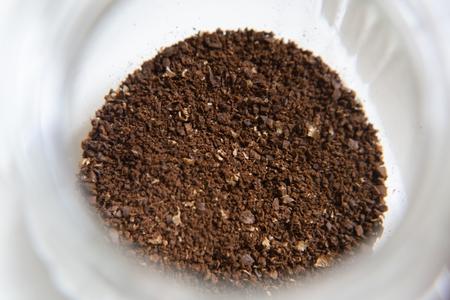
Pour-Over Devices, like the Chemex or V60, often lean towards a medium-fine grind. The water remains in contact with the coffee for a couple of minutes, making this grind ideal for a balanced extraction.
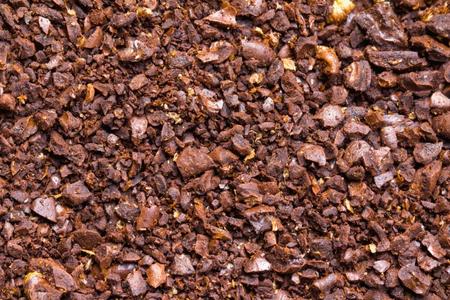
French Press advocates swear by a coarser grind. The extended steeping time (often 4 minutes or more) pairs well with larger particles, preventing over-extraction and ensuring a smooth brew.
Cold Brew methods, where coffee grounds steep for several hours, are best paired with a very coarse grind to ensure the final product isn’t overly bitter.
Choosing the right grinder is as crucial as selecting the beans themselves. A consistent grind ensures that all coffee particles extract at the same rate, leading to a harmonious cup.
Blade Grinders, though accessible and affordable, can be inconsistent. They chop rather than grind, leading to uneven particle sizes.

Burr Grinders, on the other hand, offer precision. Utilizing two burrs that crush the beans into a consistent size, these are often favored by coffee aficionados.
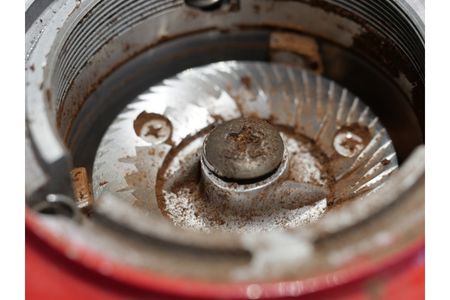
Manual vs. Electric: While electric grinders offer convenience and speed, manual grinders give a tactile experience and often greater control over the grind size.

The pursuit of the perfect cup of coffee is filled with experimentation.
Understanding the intricate relationship between grind size and brewing method can profoundly enhance your morning ritual.
As with all things coffee, the key is to trust your palate and enjoy the journey of discovery.
Water Matters: Delving into the Essence of Coffee Brewing
Water, often viewed as a mere medium in coffee-making, holds a far more significant role than one might initially think. In fact, it’s the very soul of your brew, constituting more than 98% of your cup of coffee.
But not all water is created equal, and its quality can dramatically impact the taste and aroma of your favorite beverage.
The mineral content of water plays a crucial role in the extraction process. Minerals like magnesium and calcium can enhance the extraction of flavor compounds from coffee grounds.
However, an excess of these minerals leads to hard water, which can make your coffee taste overly bitter and even leave scales in your coffee machine.
Conversely, soft water, low in mineral content, can result in a flat or sour cup, as it may under-extract the flavorful compounds from the coffee.
Apart from hardness, purity is vital. Impurities or contaminants in water can introduce off-flavors to the coffee. Chemicals like chlorine, commonly used to treat tap water, can overshadow the subtle nuances of coffee beans, dampening their vibrancy.
For an optimal brew, it’s essential to strike a balance. Filtered water, which removes unwanted impurities while retaining beneficial minerals, often serves as the best choice for brewing.
By giving water its due importance, one ensures that every sip of coffee is as delightful and flavorful as it’s meant to be.
Maintenance and Care: Maximizing Your Coffee Maker’s Lifespan and Flavor Potential
Coffee makers, like any appliance, benefit immensely from regular upkeep. Not only does this practice prolong the machine’s lifespan, but it also ensures that every cup brewed tastes its absolute best.
Here’s a guide on how to provide your coffee maker with the TLC it truly deserves.
Regular Cleaning
Each time you brew, coffee leaves behind oils and minute grounds that, over time, can build up and affect the machine’s performance and the taste of your coffee.
A quick rinse after each use can go a long way. For drip coffee makers, this means emptying the carafe, rinsing it, and washing the filter basket.
For espresso machines, it’s a good idea to run a water cycle without coffee to clear out any residues.
Deep Cleaning
Once a month or after every 20-30 brews, it’s beneficial to conduct a more thorough cleaning.
This involves using a solution of equal parts water and white vinegar to run through the machine. This mixture helps dissolve mineral deposits and other residues.
After using the vinegar solution, make sure to run a few cycles of plain water to ensure no vinegar taste lingers.
Water Quality
While this might not seem like a direct maintenance tip, the type of water you use can have a considerable impact.
Hard water, laden with minerals, can lead to deposits inside your machine, affecting its efficiency and potentially leading to breakdowns.
Using filtered water not only improves the taste of your coffee but also helps in reducing the mineral buildup inside your machine.
Check for Wear and Tear
It’s essential to occasionally inspect your coffee maker for any signs of wear and tear.
This includes looking at seals, checking for any leaks, and ensuring that all parts fit snugly and securely.
Small issues can quickly escalate if not addressed, so being proactive can save you from more significant problems down the road.
Grinder Maintenance
If your coffee machine comes with a built-in grinder or if you use a separate grinder, don’t forget to clean it regularly.
Old coffee grounds can become stale and impart an undesirable flavor to your brew. A brush or a dry cloth can help remove old grounds and coffee dust.
Some grinders also benefit from a periodic deep clean using grinder cleaning pellets.
Store Properly
If you don’t use your coffee maker daily, store it in a cool, dry place, free from dust and direct sunlight. This helps in preserving its components and ensures it’s ready to use when needed.
By adhering to these maintenance and care guidelines, you’ll not only enjoy a machine that lasts longer but also savor a cup of coffee that tastes as fresh as the first one you brewed. After all, a little effort goes a long way in ensuring that your daily coffee ritual remains a cherished one.
Comparative Reviews: A Deep Dive into the Leading Coffee Maker Brands and Models in the Philippine Market
In the Philippines, a country known for its rich coffee heritage, the culture of brewing at home has seen an upswing.
Whether it’s the robust Barako from Batangas or the aromatic Arabica from Benguet, Filipinos love their coffee.
Choosing the right coffee maker can elevate this experience. Here, we analyze the top brands and models that have captured the hearts and kitchens of Filipinos.
De’Longhi: Renowned internationally, De’Longhi has also found favor in the Philippines. With a range that spans from espresso machines to drip coffee makers, their devices are celebrated for their durability and precise brewing techniques. Models like the Dedica EC685 are popular among Filipinos who enjoy the richness of espressos and cappuccinos.
Breville: Breville’s machines, known for their innovative features, cater to both novices and coffee connoisseurs. The Barista Express, for instance, with its built-in grinder and intuitive interface, empowers users to craft café-quality brews at home.
Cuisinart: This brand has made its mark in Filipino households, especially with models that cater to drip coffee enthusiasts. Their Brew Central DCC-1200, with its programmable features, ensures that a fresh pot of coffee is ready whenever you desire.
Hanabishi: A local favorite, Hanabishi offers affordable yet efficient coffee makers. Their simple designs and user-friendly approach make them a go-to for many Filipinos who want a straightforward, no-frills brewing experience.
Krups: With German engineering at its core, Krups combines sleek designs with powerful performance. Models like their Grind and Brew offer a seamless experience, grinding fresh beans before brewing, ensuring maximum freshness.
Imarflex: Another brand that resonates with the local populace, Imarflex, provides reliable coffee makers suited to the Filipino lifestyle. Their multi-cup brewers, in particular, are ideal for family gatherings or group breakfasts.
Keurig: While single-serve pod machines are a relatively new trend in the Philippines, Keurig has started gaining traction, especially in urban areas. Their machines, compatible with a range of flavored pods, offer convenience and variety in a compact form.
The Philippine coffee market, blending local traditions with global trends, offers a plethora of choices for the discerning buyer.
Whether you’re seeking the perfection of an espresso or the comfort of a simple drip, there’s a machine tailored for your needs.
Remember, while brands and models provide the tools, the heart of a memorable coffee experience lies in the beans and the love with which it’s brewed.
So, equip yourself with the best, and let every cup be a celebration.
Coffee Makers: More Than Just Appliances
To say that coffee makers are mere tools would be an understatement.
They’re gateways to a world of flavors, a bridge that connects cultures, and a canvas for creativity.
As the coffee culture continues to evolve, these devices have transformed from simple appliances to symbols of a modern, conscious, and sophisticated lifestyle.
So, the next time you sip on a freshly brewed cup, take a moment to appreciate the magic that went into its creation.
Whether you’re a seasoned barista or someone who’s just starting on their coffee journey, there’s a coffee maker out there that’s just right for you. And in this ever-expanding world of coffee, that’s a comforting thought.
A Toast to Modern Coffee Culture
Navigating the vibrant landscape of coffee in the Philippines, we’ve journeyed from traditional brewing methods to cutting-edge technological innovations.
With each step, two constants remain: our enduring love for coffee and the quest for that perfect brew. Whether it’s a high-tech smart machine or a cherished manual method, it’s the passion and tradition behind each cup that truly resonates.
As we embrace the future, we cherish the blend of history and innovation, celebrating every sip. Here’s to the timeless allure of coffee! Cheers!

FAQs: Coffee Makers